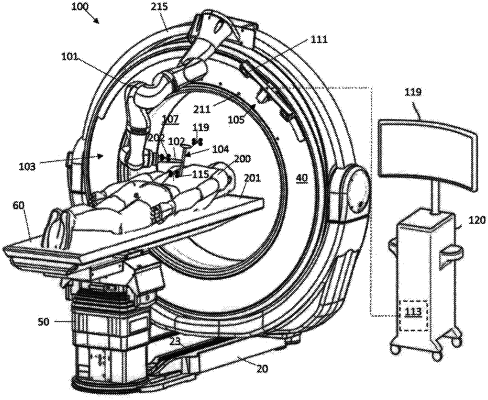| CPC A61B 34/20 (2016.02) [A61B 17/3423 (2013.01); A61B 34/32 (2016.02); A61B 34/76 (2016.02); A61B 5/055 (2013.01); A61B 6/032 (2013.01); A61B 2034/2048 (2016.02); A61B 2034/2055 (2016.02); A61B 2034/2057 (2016.02); A61B 2034/2065 (2016.02); A61B 2034/2068 (2016.02); A61B 2034/2072 (2016.02)] | 7 Claims |

|
1. A method for defining a boundary surface for a robotic surgery system, comprising:
identifying at least a portion of an epidermal surface of a patient in an image dataset of an anatomy of the patient, wherein the image dataset comprises at least one of a three-dimensional x-ray CT reconstruction and a three-dimensional MRI dataset;
generating a boundary surface based on the identified epidermal surface, wherein the boundary surface comprises a virtual three-dimensional surface above the epidermal surface of the patient;
registering the image dataset and the boundary surface within a patient coordinate system;
defining a target location below the epidermal surface of the patient; and
controlling a robotic arm to:
maintain an end effector of the robotic arm pointed along a trajectory intersecting with the target location and with the boundary surface;
allow movement of the robotic arm to advance the end effector along the trajectory toward the target location; and
prevent the end effector from crossing the boundary surface, the end effector configured as a cannula configured to allow one or more instruments to removably pass through the cannula to the target location along the trajectory.
|